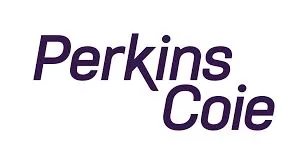The U.S. Patent and Trademark Office (USPTO) extended its Climate Change Mitigation Pilot Program (CCMPP) in June 2023, encouraging inventors to play a more significant role in mitigating climate change. The USPTO created the CCMPP more than a year ago in response to President Biden's Executive Order 14008, which supports climate action throughout the United States. The CCMPP creates an opportunity for expedited examination of patent applications directed to technologies that mitigate climate change. There is no cost for submitting a petition to apply for examination under the CCMPP. If an applicant's petition under the CCMPP is granted, their patent application is automatically placed in the USPTO's Prioritized Patent Examination Program, which expedites examination of the patent application and the resulting first office action or allowance. In the past year, 244 patent applications (of the 354 filed) were granted this no-cost, fast-track opportunity, which accelerated the pace at which technologies fighting climate change could start making an impact.
The CCMPP is available until June 7, 2027, or until a total of 4,000 applications have been granted special status. To receive special status, applicants must meet a few filing requirements and a claim requirement. To meet the filing requirements, applicants must file a petition with the USPTO within 30 days of filing their original nonprovisional utility patent application, continuation patent application, or divisional patent application. However, a patent application filed under the program may claim priority to only one earlier nonprovisional or U.S.-designated foreign patent application. Further, inventors are allowed to file a petition only if they have 12 or fewer successful petitions under this program. The claim requirement is as follows:
"Applications must contain one or more claims to a product or process that mitigates climate change by being designed to: (a) remove greenhouse gases already present in the atmosphere; (b) reduce and/or prevent additional greenhouse gas emissions; and/or (c) monitor, track, and/or verify greenhouse gas emission reductions."
Thus, an applicant must include at least one claim—independent or dependent—that relates to mitigating climate change.
From the context described above, there are many potential impacts of the CCMPP. Most immediately are the practical considerations that the CCMPP creates for applicants, practitioners, and businesses. For applicants, those seeking an expedited examination should now think of potential ways that their technology can fight climate change. For practitioners, they should now proactively ask inventors questions that reveal how their technology is eligible for the value of a no-cost, fast-track patent application through the CCMPP. Finally, for businesses, their patent programs should now incorporate a process to identify and/or reward inventors for inventions that are eligible for the CCMPP. For example, an invention intake form can include questions to identify inventions that might be eligible for the CCMPP.
Beyond the day-to-day impact, the CCMPP has the potential for a few broader effects. First, the CCMPP allows the patent practitioner community to help fight climate change by advancing CCMPP cases and by making clients aware of this opportunity. Second, the valuable opportunity for a no-cost, fast-track patent may help increase awareness of climate change across industries, particularly those that prefer expedited patent application timelines. Finally, the simplicity of the CCMPP's requirements may incentivize a broader shift toward creating climate technologies because eligibility of any invention requires just one claim related to mitigating climate change.
*The authors wish to acknowledge Summer Associate Ben Brokesh's contributions to this Update.
The content of this article is intended to provide a general guide to the subject matter. Specialist advice should be sought about your specific circumstances.



